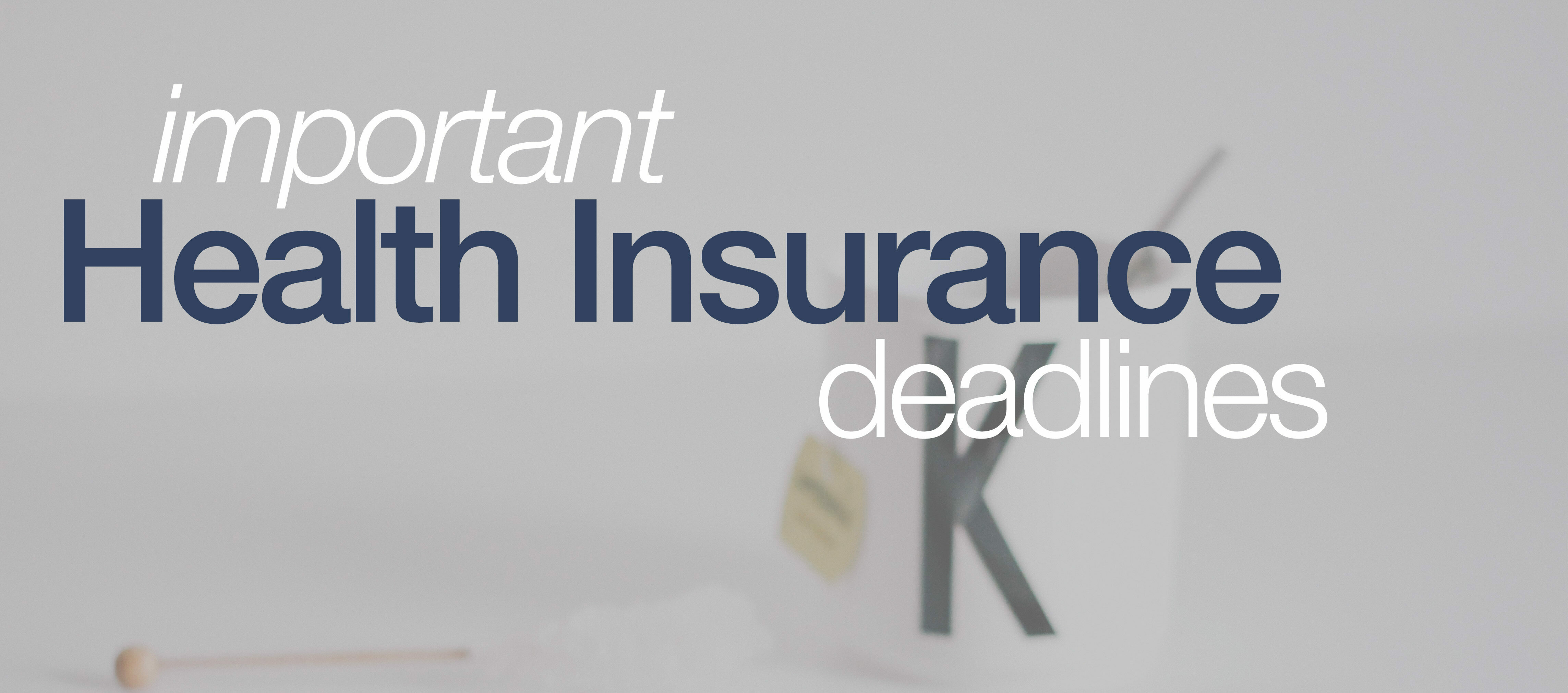Important Health Insurance Deadlines Coming Up

Important Health Insurance Deadlines Coming Up
What to do about open enrollment and Medicare
With the election of Donald Trump and Republican majorities in both houses of Congress, the future of healthcare becomes cloudier than ever. At the moment, however, the law stands as is, including the requirement that everyone obtain health insurance coverage or face paying a hefty penalty (in the form of an extra tax hit).
Health insurance enrollment can be complicated, and it’s easy to feel confused about how to find coverage and when to apply. As we near the end of 2016, there are a number of important deadlines you should be aware of.
Health Exchange Open Enrollment Deadlines for 2017
Beginning November 1st, individuals could enroll or change their current insurance plan through the Health Insurance Marketplace. Anyone can find a health insurance plan by going to www.healthcare.gov and walking through the process to get coverage. This system was specifically set up by the Affordable Care Act (often called “Obamacare”) to facilitate finding appropriate coverage.
An application for enrollment must be complete by January 31, 2017, in order to have an acceptable plan in place for 2017. If you enroll on or before December 15th, coverage could begin as soon as January 1st.
If you need coverage but do not enroll between November 1, 2016, and January 31, 2017, there are Special Enrollment Periods during which you may be able to sign up for a plan instead. Special Enrollment is only available if you have certain qualifying events happen in your life, such as losing your health coverage, getting married, or having a baby.
You can also skip the insurance marketplace and go directly to insurance companies for coverage. This may allow you to obtain coverage at better rates or at different times by applying right on the health insurer’s website. Try this Plan Finder tool to see what’s available in your area.
More information about the Health Insurance Marketplace is available at www.healthcare.gov.
Medicare Enrollment Deadline for 2017
Those age 65 and older are eligible to sign up for Medicare, the federal health insurance program available for seniors. Those who miss signing up at the right time face late enrollment penalties, which permanently increase the monthly premiums for insurance. Once you turn 65, you have three months after the month you turn 65 to sign up for Part A (hospitalization coverage) and Part B (medical coverage). You can also sign up three months before you turn 65.
For example, if you turn 65 in January 2017, you can sign up for Medicare Part A and B as early as October 1, 2016 (three months before your birthday month) and as late as April 30, 2017 (three months after your birthday month).
Seniors who have group health insurance are not required to sign up for Part B, which is the coverage that applies to most doctor’s visits and outpatient care. Many who have insurance through their employer (or spouse’s employer) continue with their plan to make sure they keep their preferred healthcare providers. However, once your other insurance coverage ends, you have eight months to sign up for Medicare Part B, even if you’re on COBRA. COBRA coverage does not count as an acceptable alternative to Part B!
If for some reason you missed enrolling at your 65th birthday or when your other coverage ended, you can enroll in Medicare during the General Enrollment Period between January 1st – March 31st each year.
For more information, the AARP has a great summary of Medicare enrollment available here.
In addition, those who are both 65 or older and enrolled in Medicare Part B can sign up for a Medicare Supplement Plan (Medigap). These plans cover additional health needs not covered by Part A or B, and the best time to sign up is during the six-month period from the first day of the month that you are both 65 or older and enrolled in Medicare Part B. If you sign up during this period, you’re guaranteed coverage.
Employer Plan Open Enrollments
Many individuals have health insurance covered through plans offered by an employer or a spouse’s employer. These enrollment periods are largely determined by the individual employers, but many have open enrollment periods at the end of the year during which health insurance plans can be changed, upgraded, or dropped entirely. If you receive coverage through an employer plan, make sure you know when your annual open enrollment begins and ends.
Which plan to select is a very individual decision based on many factors, including what’s available through your company, your family’s and your health status, and your level of income. Healthy high income earners often choose High Deductible Health Plans, which allows them to save money in a Health Savings Account (HSA). Others with health issues may chose a higher premium low-deductible plan, knowing they will very likely reach their plan’s maximum out-of-pocket expenses. Some decide to decline coverage altogether and go with faith-based healthcare sharing ministries instead.
As you compare options, it’s best to add up annual premiums and expected medical expenses to see which plan may work best for you. Once you understand your most likely scenario for the year, look at what would happen under each plan if something very unexpected happened. How would your finances be impacted if a major health crisis hit your family? Finally, look at the worst-case scenario. If health costs were so catastrophic that they maxed out the plans, what would be your total out-of-pocket expenses?
Deciding which health insurance option to go with (and complying with all the deadlines) can be tricky. If you’re having trouble, reach out to a health insurance expert or financial planner to help you weigh your options and analyze your situation.
< Back to Updates

